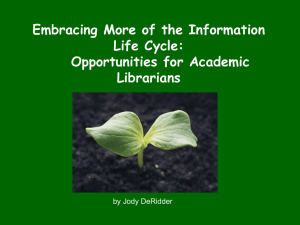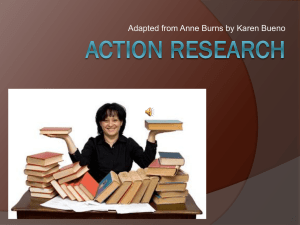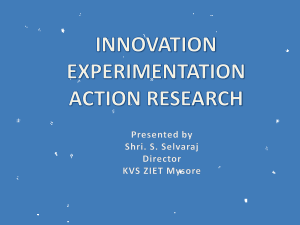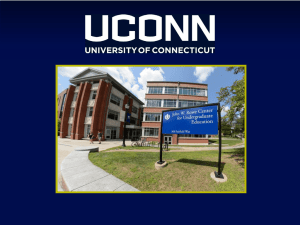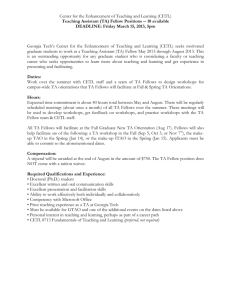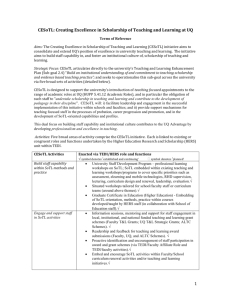Writing an Effective Proposal for Innovations in Teaching Grant
advertisement
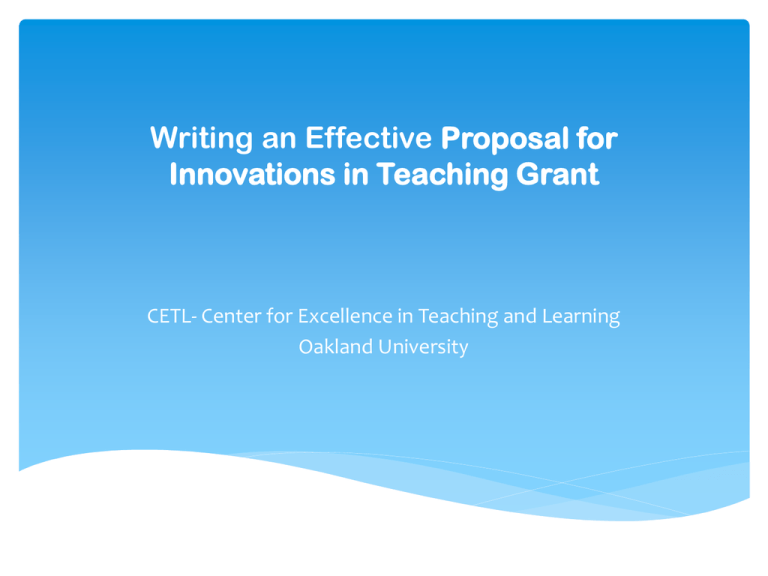
Writing an Effective Proposal for Innovations in Teaching Grant CETL- Center for Excellence in Teaching and Learning Oakland University Learning Outcomes Participants will be able to: - Review the Grant application and process - Review the eligibility of the grant - Review the criteria for evaluation - Develop steps and strategies in writing an effective grant focusing on each component - Engage in questions and answers Introduction $3,000.00 grant to enhance innovative teaching that focuses on student engagement, active learning, meeting learning outcomes and student success. Proposals must include innovative approaches to teaching and learning and detail how active teaching and learning strategies will be implemented and evaluated (SoTL) Up to five grants of $3,000 each will be awarded yearly. The award will be distributed in two installments; $1,000 will be provided at the beginning of the grant (summer) and the remaining $2,000 will be given upon submission of the final report. Purpose To give faculty time and funding to work on instructional improvement projects in their field that involve activities and time beyond the teaching preparation normally expected of faculty. To promote and advance the Scholarship of Teaching and Learning (SoTL) It is expected that the project will be implemented and assessed within the next academic year. During this period, applicants may not be working on any other funded project (through E-Lis or department) similar to the proposed project. Proposals for new courses or for significant course redesign should be based on innovative teaching methodologies, development of new teaching materials for active teaching and learning, and/or new technologies. Eligibility Tenure-track, tenured faculty, and full-time teaching instructors (i.e. special instructors, full-time adjunct and visiting professors) may apply for the grant. Special Lecturers and Part-Time instructors who have taught a minimum of 24 credits at Oakland may also apply. Each application must be supported (signature on cover sheet) by the applicant’s chair/program director. Two or more faculty working collaboratively may submit a proposal for a single fellowship with division of payment for each participant indicated. Application Procedure The applicant should: sign the proposal cover sheet obtain signatures from the department head and appropriate dean/director (scan cover sheet) submit one complete proposal (with scanned cover sheet) as attachments to CETL at cetl@oakland.edu. Applicant names should not appear on any page of the proposal other than the cover sheet. DEADLINE: March 14th 5:00 p.m. Project Requirements 1.Proposal- as outlined Cover page- with signature of chair/dean Proposal- up to 3-5 pages 2. Proposal acceptance by April- $1,000 awarded 3. Summer planning and preparation- note: if you plan to “publish” your results you will need to seek Human Subjects (IRB) approval during the summer semester. 4. Course implementation- Course to be taught between Summer II 2014-Winter 2015 5. Course evaluation- how you will assess the impact of “innovations” 6. Final Report- submitted within one semester following course implementation. Length- 3-5 pages Remaining $2,000 will be provided at this time Report to include: Summary of project Examples of innovations used to increase engagement, active learning, meeting learning outcomes and student success. Evaluation of project advancing the scholarship of teaching and learning Analysis and discussion of evaluation Next steps and follow-up 7. Dissemination of Project- You will be expected to share the results of this project through a presentation at CETL and are encouraged to present or publish elsewhere. Project Proposal The proposal should be approximately three- five typed, double-spaced pages and must address the following: 1. Description of the need for the design or redesign of the course. 2. Description of the project 3. Teaching innovation, active learning. 4. Impact on learning. 5. Evaluation of project. 6. Timeline. Selection Criteria (20) Problem/need: the degree to which the project or course design/redesign addresses a significant pedagogical need and its likelihood of success in addressing the need specified. (30) Teaching innovation and use of active learning strategies: the degree to which the approaches are innovative for the individual, the department, or the field, and pedagogically sound; and the degree in which active learning strategies are planned to be implemented (20) Potential impact: potential for enhancing student engagement, active learning, meeting learning outcomes and increasing student success. (20) Evaluation: appropriateness and effectiveness of the proposed evaluation process in assessing the impact of the project on student learning. (10) Time Commitment: Clear evidence that significant time (beyond the normal course preparation time) will be devoted to planning, implanting and assessing this course. Description of the need for the design or redesign of the course Why is it necessary to develop new instructional approaches? In what ways does this project go beyond normal teaching preparation? Description of the project. How will this course design or redesign address the need described in item one? Describe, in particular, the innovative and creative aspects of the project. Teaching innovation, active learning In what ways are these innovative approaches to teaching and learning for you, your department, or your field? Explain how new approaches will be incorporated. Provide pedagogical support Appropriate Examples Flipped classrooms Problem based learning Team based learning Peer learning Implementing authentic assessments and constructive alignment Differentiated Instruction Universal Design of Learning On-line learning Service learning Team teaching approach Expected, normal Course Prep that would not lead to a grant award Adding or revising content Revising simple assignments Updating syllabus Impact on learning Describe how you expect this project to improve student engagement, student learning outcomes, and student success. Clearly describe the relationship between the proposed activities and the anticipated student learning outcomes. Scholarship of Teaching and Learning The Scholarship of Teaching and Learning (SoTL) recognizes teaching as scholarly work and encourages faculty to use research to better understand and improve their own teaching practices. Systematic study of own teaching practices Dissemination of results Evaluation Include a proposed assessment plan that will evaluate the effectiveness of the course or project on the quality of student learning resulting from the new approach to teaching developed with this fellowship. Multiple methods of evaluation are encouraged. Evaluation measures might include midterm assessments, peer reviews, student focus groups, pre-and post-tests, questionnaires, end of term student ratings, interviews, samples of student work, reflective student writing, etc. Time-Line Indicate the proposed timeline for the project from the preparation and planning during the summer period, through actual implementation with students when the course is taught, and the point at which final assessments and your final report will be completed. Please include the percentage of a normal work week (40 hours), during the summer period that will be devoted to this project. Tips to help write an effective proposal Demonstrate the implementation of “innovations in teaching and learning” , “active learning”, “student engagement”, “learning outcomes”, “student success” and “student retention” Include specific examples of what you plan to do Establish clear need and rationale Support with pedagogy (research on teaching practice) Demonstrate how this goes “beyond normal planning” Develop clear evaluation procedures that focuses on the Scholarship of Teaching and Learning Address each component in application with focus on the evaluation criteria 3-5 pages well written Examples of Strong Proposals CETL has examples of strong proposals that have been awarded grants in the past. Feel free to review them. Questions and Answers Please feel free to contact me at ableser@oakland.edu or at 248-370-2455 if you have any questions Judy Ableser- Director
